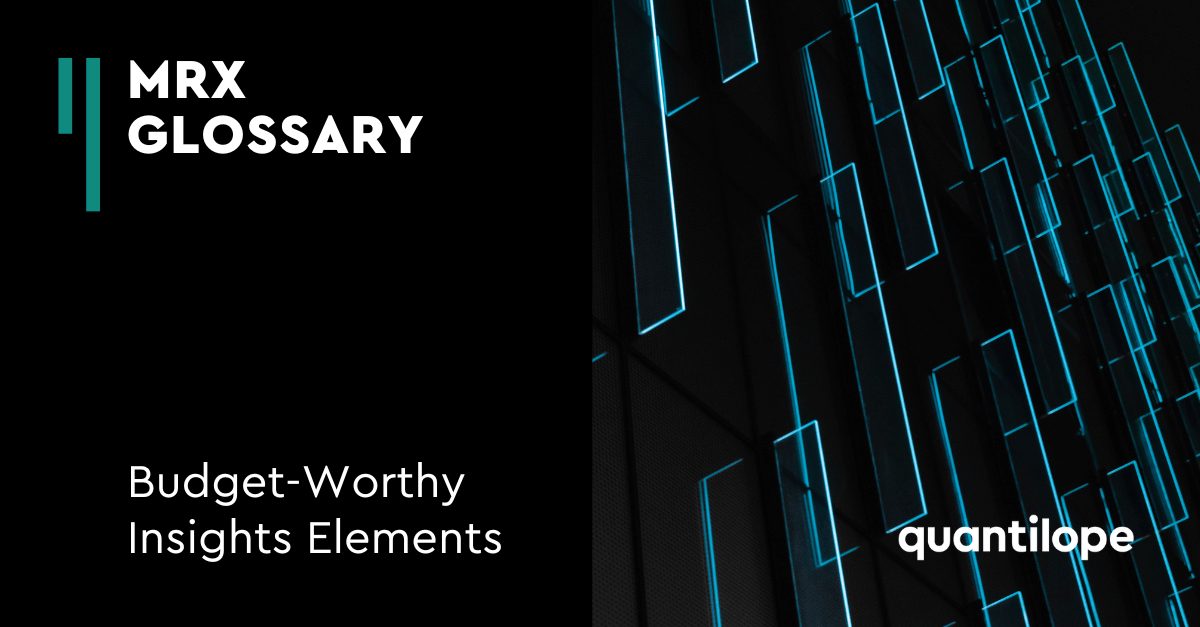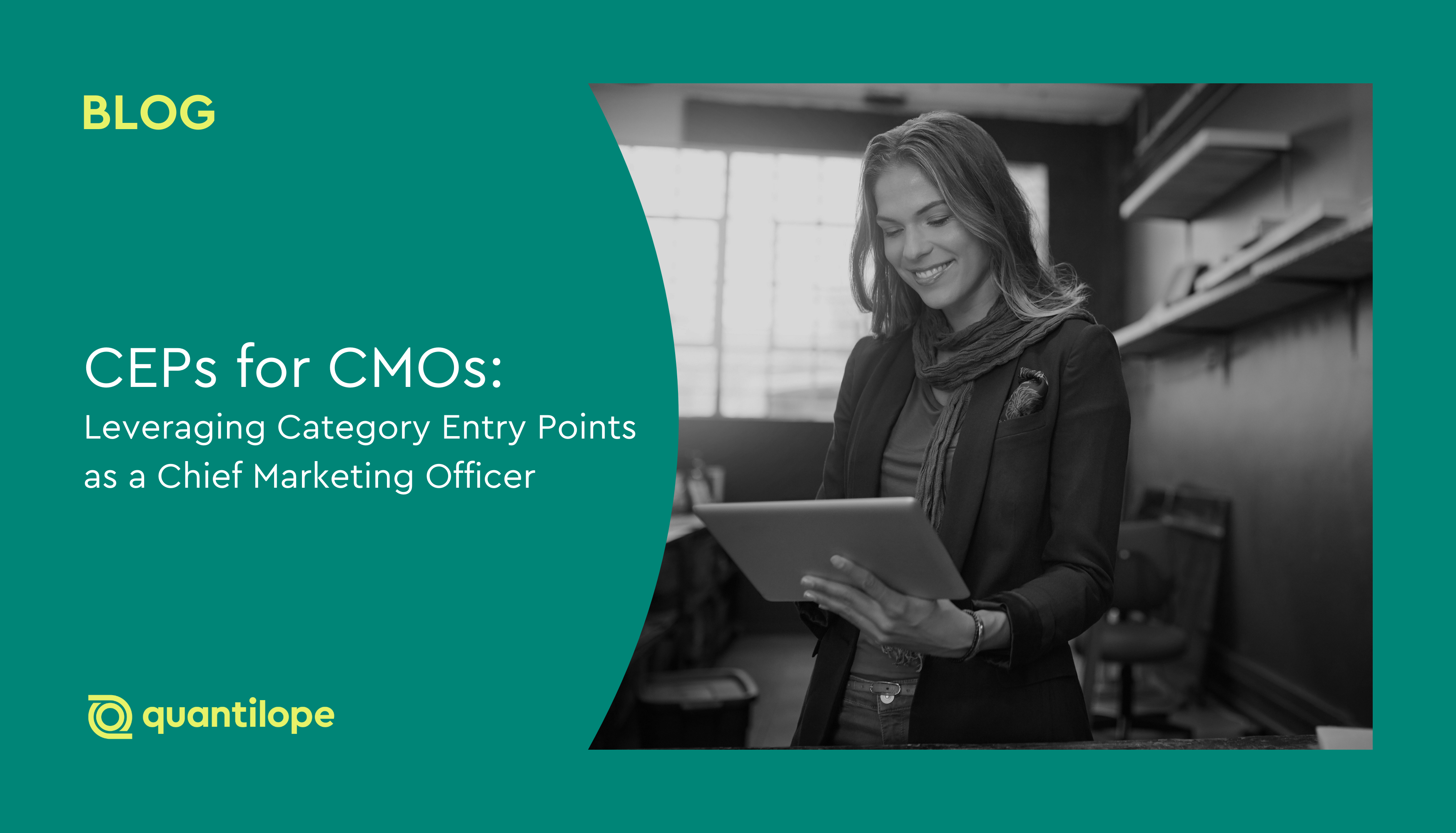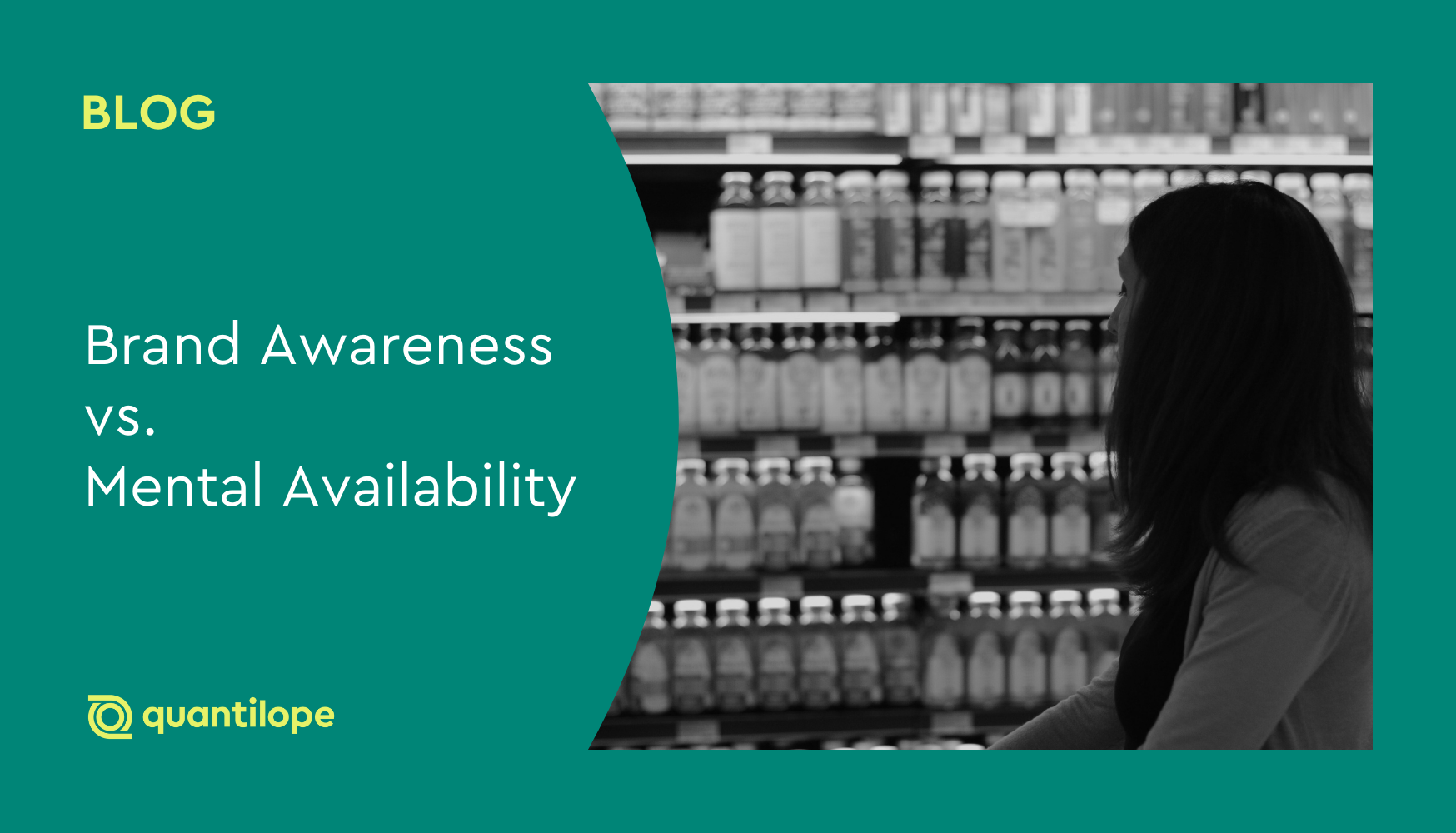This blog post outlines the four key components of market research that are worth investing in for smarter business decisions. These are the elements every insights team should look for when considering new research providers - such as traditional agencies or online research platforms.
Table of Contents:
-
How market research investment helps save cost and increase revenue
-
Use quantilope to make the most of your market research budget
Key elements of a strong market research study
Below are the four elements that are well worth the investment when planning new market research projects or initiatives.
High-quality sample
Fundamentally, a high-quality insights study stems from high-quality, primary research respondents. If you don’t focus on recruiting the right respondents for your study that will give thoughtful, actionable, and insightful answers, you’re wasting valuable budget that could be better spent elsewhere. That’s because poor-quality respondents will provide feedback that you can’t actually do much with, or even worse, could misguide your business. The actions you’d take depending on their responses likely won’t reflect your true target market’s preferences (i.e. the ones actually buying your products and services).
Below we’ll talk about the different elements to consider when recruiting a primary research sample, which is generally a more tailored and specific research approach than using secondary data from secondary research sources (like published reports/papers, industry syndicated data, etc.)
- Quantitative research studies:
To recruit a high-quality sample, start by deciding on the key demographics you want to measure. If you’re looking for general information about your category or business area, a sample group that’s representative of the general population should provide sufficient, high-quality responses. For brands looking for more niche audiences (like household grocery shoppers, etc.) they might want to partner with a panel provider who can source these specific groups in an effective way. Panel providers have a database full of respondents willing to take online surveys (and who have been vetted in advance to provide high-quality feedback). Brands will typically pay per complete to use these panel providers (i.e. $1 per respondent) but it’s worth the cost to get feedback you can rely on to make important business decisions.
Other brands might already have their own database of respondents they want to use for a questionnaire (say, users of their product/service). In this case, the brand wouldn’t need to use an external panel provider but rather connect its list of respondents to their insights survey for completion. Users of a product/service will provide helpful feedback for the brand (even if it’s negative - from which the brand can learn), though it’s always important to review the final dataset for poor-quality answers (this is true even when using panel providers!).
- Qualitative research studies:
The above scenarios discuss online panel experiences, but high-quality respondents are just as important for face-to-face qualitative studies (which are great for early-stage development or to provide added details to a quant study). In-person or online focus groups will gather fewer respondents than online quantitative studies, therefore making it even more important to ensure high-quality responses. Because you’re collecting just a handful of completes with a qualitative methodology, if a large portion of those responses is poor quality, you have very few insights to actually work with when it comes to understanding and acting on prospective or current customer needs.
Regardless of quant or qual, it’s worth taking the time to really vet and recruit high-quality respondents for your research studies. This sets a brand up for a successful, actionable, and reliable market research report that stakeholders can leverage when making key business decisions.
Back to Table of Contents
Efficient data collection
Aside from ensuring your panel respondents are coming from a high-quality source, you’ll always want to choose a research provider that can offer efficient data collection. This might mean opting for a research platform that can provide a real-time pulse on consumer insights or investing budget into expediting results with a traditional agency (who typically take longer for fieldwork.)
Efficient data collection for a research project can make all the difference when it comes to acting on market trends. Say, for example, two competitors each run a market research study - one with a slower, traditional market research agency (without paying to expedite results), and one who opts for an end-to-end online insights platform. Using a traditional vendor, the brand will go through the standard process of setting up their survey, connecting to a panel, having it sent to data processing for cleaning, getting a crosstab file sent back, and manually entering insights into a market research report. Compare all that to the brand that leveraged an online platform, with all research steps housed in one centralized place, and where they can watch the results populate data charts as respondents complete the survey. The latter brand is able to start putting together preliminary insights, get an idea of the trends, and put a final report together before fieldwork even wraps up. This allows them to act as quickly as possible on market trends and stay ahead of them rather than trying to catch up. Meanwhile, the brand using a traditional agency without efficient data collection (i.e. real-time results) scrambles to put together a stakeholder key takeaway report before a trend passes.
When the market moves as fast as it currently does, it’s well worth the investment to gather target audience feedback in a quick and efficient manner.
Back to Table of Contents
Advanced method insights
When a company decides to do market research, it’s expected they’ll ask the basic questions around consumer decision-making - like brand awareness and consideration, buying habits, customer experience, customer satisfaction, and so on. These types of questions are standard. What takes a research project to the next level is the incorporation of advanced methodologies for more detailed, in-depth information about your target customers.
Let’s say that you’re running a study on pricing to learn what your customers are willing to pay for a new product you’re soon launching. You could simply ask them in a standard survey to pick from a set of single choice options or to type in a numeric value, or, you could run a Price Sensitivity Meter/Van Westendorp Method to discover an ‘optimal’ price, a price range, what’s considered ‘too cheap’ and ‘too expensive’ and so on. Instantly, you take basic pricing insights to detailed ones you can easily act on.
As another example, say you want to know your target customers’ favorite flavors of ice cream to guide product development for a new ice cream product. You can take the basic route and ask them to rank their favorite flavors, but that could leave you with rankings that don’t really tell you how much more consumers like their first-ranked flavor compared to their second and third (and in fact, respondents may have equally liked all three). Instead, by leveraging a MaxDiff you find out that customers prefer Strawberry over Vanilla and Oreo (but only when Chocolate isn’t an option) by forcing them to make tradeoff decisions.
Advanced insights (though sometimes an added research cost upfront) generate immense value for your product development process, market analysis, marketing efforts, and more. When looking for a research provider, always ask about their advanced method capabilities so you can get the most from your insights investment.
Back to Table of Contents
Data visualization
Data visualization options allow brands to showcase their research findings in a digestible way for internal or external stakeholders. This is an element of the market research process worth considering when planning your investment, as basic charting outputs won’t generate nearly the same impact as a market research report with captivating data visuals.
It’s a consideration for investment because many basic research providers won’t have many customization options when it comes to charting - limiting you to standard bar and pie chart outputs. This is important to keep in mind when deciding between these types of providers and a more sophisticated end-to-end platform that might offer more options. Additionally, you can choose to invest in an external reporting service that can enhance your charts even if you initially receive a basic output.
While it may seem trivial, the way you present your data to decision-makers will impact what’s done with results. A stakeholder with a 100+ slide deck presentation is likely to open it and forget about it compared to an interactive dashboard they can share around with team members, come back to with the click of a button, and easily leverage in presentations. Impactful elements of a market research report include dynamic statistical testing, chart variety, chart customization, a zoom-in/out feature, and other interactive visualizations.
Back to Table of Contents
How market research investment helps save cost and increase revenue
Above we highlighted how high-quality samples, efficient data collection, advanced research methods, and data visualization options can heavily impact the traction a market research study has within an organization. Investing in these four areas, and choosing research vendors that can deliver on these elements, will boost revenue in the long run.
That’s because when you have real-time, detailed results from trusted respondents, you’re able to closely tailor business decisions to what’s going on in the actual market. This means creating products that align with current market trends, changing business strategies to increase customer satisfaction, or generating marketing plans that use customer-supplied language. All these examples lead to higher adoption of products/services, and thus, increased revenue for your business.
There are so many types of market research studies a brand can run, with multiple vendors to choose from. While it can feel overwhelming, choosing a vendor that hits on the four elements outlined above will be the best use of your insights budgets for long-term results and successful business growth strategies.
Back to Table of Contents
Use quantilope to make the most of your market research budget
quantilope’s end-to-end Consumer Intelligence Platform provides insights teams with the above-mentioned elements of market research in one affordable, centralized, automated platform. With a panel agnostic setup, real-time data access, 15 advanced methods (including MaxDiff, TURF, Key Driver Analysis, Conjoint, Market Segmentation, and more), and a final interactive dashboard that’s shareable with a single weblink, you’re putting your research budget to the best use.
Whether you’re looking to run a quick one-off study or a full-scope brand health tracker, quantilope’s platform makes it simple to set up, monitor, analyze, and report on findings. The platform is made to be accessible to a market researcher of any skill set or background - allowing even those with little to no experience to run primary research in a fraction of the time of traditional market research companies.
Ready to learn more about how quantilope’s automated platform can put your research budget to its best use? Get in touch below and we’ll connect you with our team of classically-trained research consultants!




